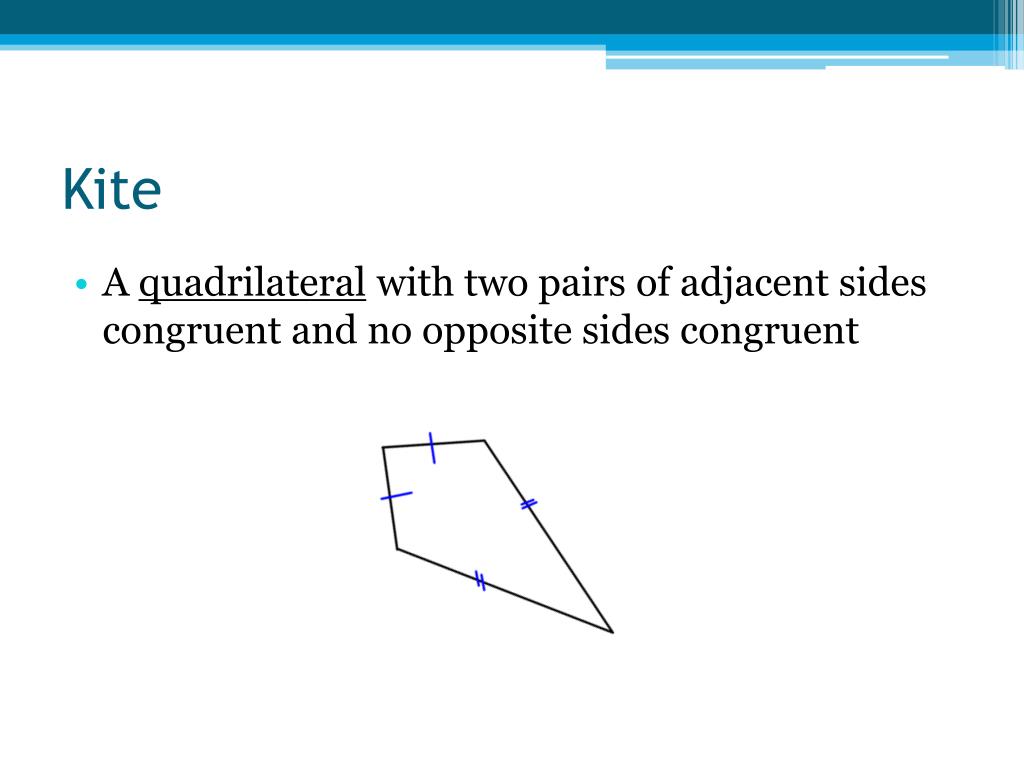

However, it is to be noted that the area of a quadrilateral is always expressed in square units. Since each quadrilateral has its own unique properties, their area is calculated using different formulas. The area of a quadrilateral is the space occupied by it.
The sum of all interior angles is 360°. Though there are different types of quadrilaterals, they share a few properties that are common. What are the Common Properties of all Quadrilaterals? For example, a rectangle is a quadrilateral with each of its interior angles equal to 90° which makes it (90 × 4) = 360°. In any type of quadrilateral, the sum of the interior angles is always equal to 360°. What is the Sum of the Interior Angles in a Quadrilateral? For example, square, rectangle, parallelogram, rhombus, kite, trapezium, isosceles trapezium are all categorized under quadrilaterals. There are different types of quadrilaterals that are identified on the basis of their unique properties. What are the Different Types of Quadrilaterals? A few examples of quadrilaterals are square, rectangle, kite, and trapezium. The following table lists the formulas for finding the area of quadrilaterals.Ĭheck out some interesting articles related to quadrilaterals.įAQs on Quadrilateral What is a Quadrilateral in Maths?Ī quadrilateral is a closed two-dimensional figure that has 4 sides, 4 angles, and 4 vertices. The area of a quadrilateral is the number of unit squares that can be fit into it. What elements of a trapezium should be changed to make it a parallelogram?. The longer diagonal bisects the shorter diagonal. It has diagonals that are perpendicular to each other. It has one pair of opposite angles (which are obtuse) that are equal. A kite has 2 pairs of equal adjacent sides. Observe the properties of a kite given below and relate it to the figure given above. Here, EG ⊥ HF and the diagonals bisect each other.Ī kite is a quadrilateral in which two pairs of adjacent sides are equal. The opposite angles of a rhombus are equal. A rhombus has 2 pairs of parallel sides. Observe the rhombus given above and relate it to the following properties: The following quadrilateral XYZW is an isosceles trapezium, in which the legs are equal, i.e., WX = ZY, and the diagonals are also equal, i.e., XZ = WY.Ī rhombus is a quadrilateral with four equal sides. But if the two non-parallel opposite sides are of equal length, then it is called an isosceles trapezium. There is nothing special about the sides, angles, or diagonals of a trapezium. The sides that are not parallel to each other are called legs. In a trapezium, the sides that are parallel to each other are called bases. Observe the trapezium given above and relate it to the following properties: It has 2 diagonals that bisect each other.Ī trapezium is a quadrilateral in which one pair of opposite sides is parallel. The opposite angles of a parallelogram are equal. The opposite sides of a parallelogram are equal. 
A parallelogram has 2 pairs of parallel sides.Observe the parallelogram given above and relate it to the following properties: Here, AC = BD and the diagonals bisect each other.Ī parallelogram is a quadrilateral in which the opposite sides are parallel.

The opposite sides of a rectangle are equal.A rectangle has 2 pairs of parallel sides.Observe the rectangle given above and relate it to the following properties: Here, AC ⊥ BD and the diagonals bisect each other.Ī rectangle is a quadrilateral in which the opposite sides are equal and parallel and each of its interior angles is 90°. Observe the square given above and relate it to the following properties: SquareĪ square is a quadrilateral with four equal sides and four right angles. We can identify a quadrilateral by using the following properties of quadrilaterals. Now, let us read about the other properties of different quadrilaterals in detail. The sum of the interior angles of quadrilaterals is 360°.Though, there are some properties that are common to all quadrilaterals. Each of the quadrilaterals discussed above has its own properties.







 0 kommentar(er)
0 kommentar(er)
